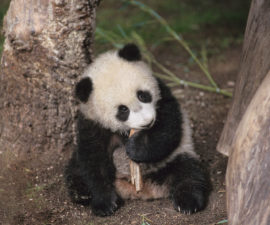BY Wendy Perkins
Photography by Tammy Spratt
If plants had mottos, the mousetrap tree’s would be “By hook or by crook.” Indeed, the seedpod itself is a living representation of that idiom! With a water-hoarding body, pollen kept in a “vault,” and a seedpod that looks like a deadly weapon, Uncarina (un-ka-ree-na) trees are truly something to admire.
If you’ve ever walked through a field and come out with burrs stuck to your socks, or have a pet that has been the victim of foxtails, get ready to be impressed. One botanist created a list of the most annoying and difficult-to-remove burrs, and Uncarina took top billing! The common name “mousetrap tree” comes from its spiky seedpod. It seems obvious that a mouse trying to get to the seeds could get tangled in the pod—and it likely would.
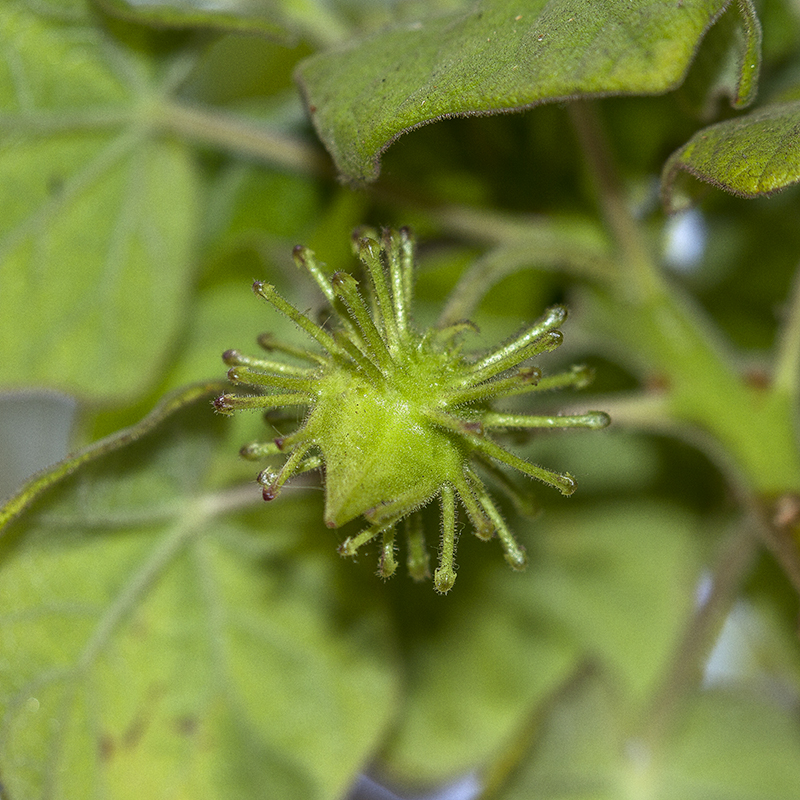
STAYING PUT
Young pods don’t bear sharp barbs, so they’re not pulled off before the seeds mature.
With long spines pointing in every direction, an Uncarina seedpod looks a bit like a satellite from a 1960s sci-fi film. The tip of each spine is equipped with four hooked barbs. There is no slipping away from this pod; brush against it and you’re both hooked. You don’t even need to be covered in fur (or clothing) to pick up one of these hitchhikers—the barbs easily latch onto bare skin.
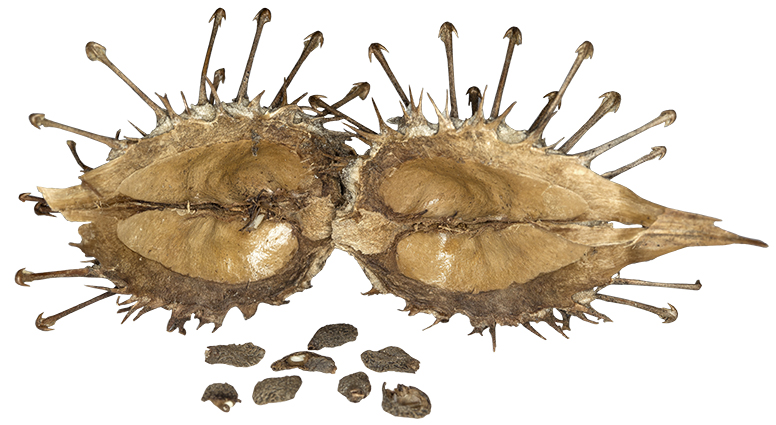
THE INNER SANCTUM
Each pod may have as many as 20 seeds. The pod opens slowly
over a period of days, dropping a seed or two at a time.
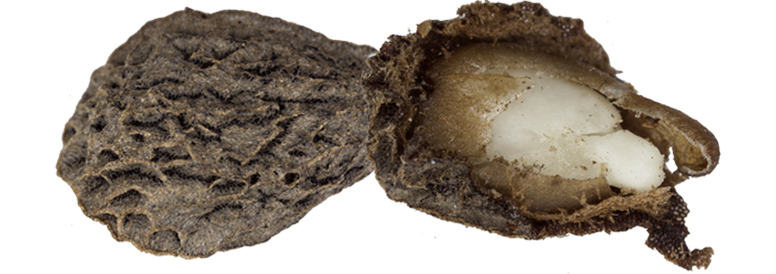
PITS PERFECT
The rough, pitted seed covering protects the plant embryo.
Sending seeds out into the world in one of these trampleburrs is an effective approach to expanding its genetic range. The pod hooks onto an animal and remains there. As the creature moves from one place to another, the pod slowly opens, releasing a seed or two at a time. Since the pods drop from and land directly under the parent tree, it would be easy for any number of animals to become unknowing transport. A group of scientists hypothesize that the now-extinct, giant elephant bird was a likely seed disperser at one time. Today, ring-tailed lemurs have been seen with Uncarina pods stuck in their fur, and domestic cattle on Madagascar may have taken the place of the elephant bird as dispersers.
As a genus, Uncarina seem to have a simple solution to the challenge of growing the population. Yet, getting to the seed-and-pod point is a bit more complicated. The beautiful, demure flowers that bloom on these trees belie a tricky pollination process.
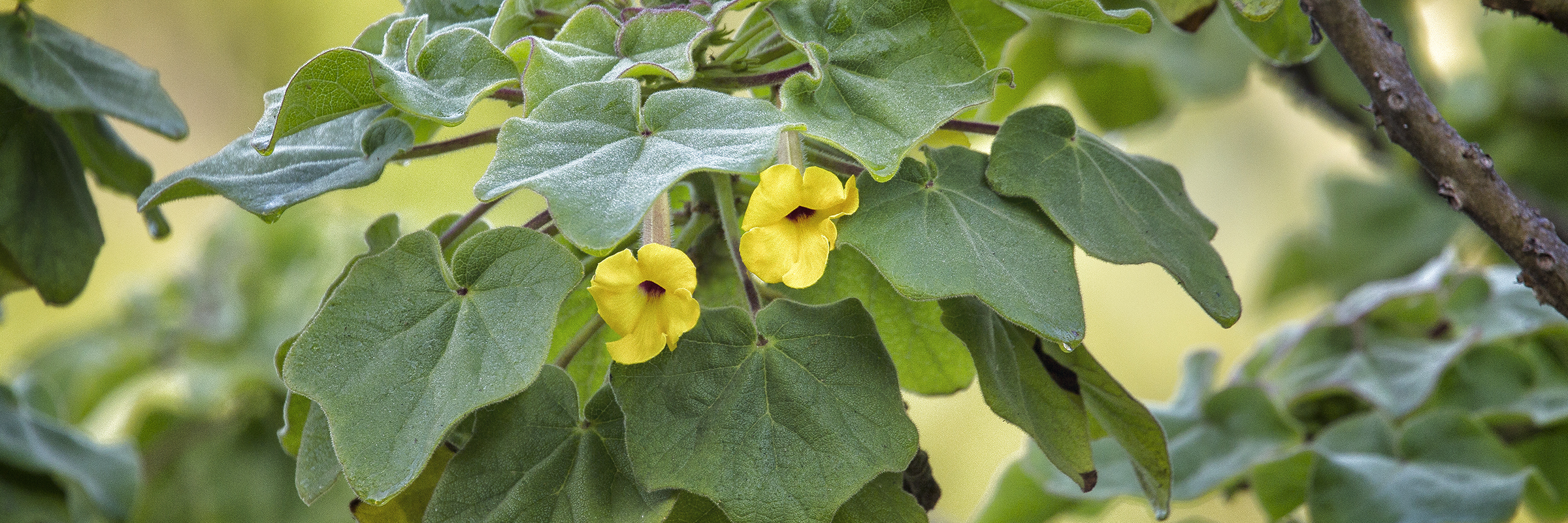
Pass or Fail
Most of the seven species of Uncarina produce yellow petunialike blossoms with deep maroon throats. U. stellulifera and U. leptocarpa bear pale pink and white flowers, but despite the color difference, the internal anatomy is the same. And while the structures within serve the same purpose as those in many other flowers, there are a couple of suprising twists in the pollination protocol of Uncarina.
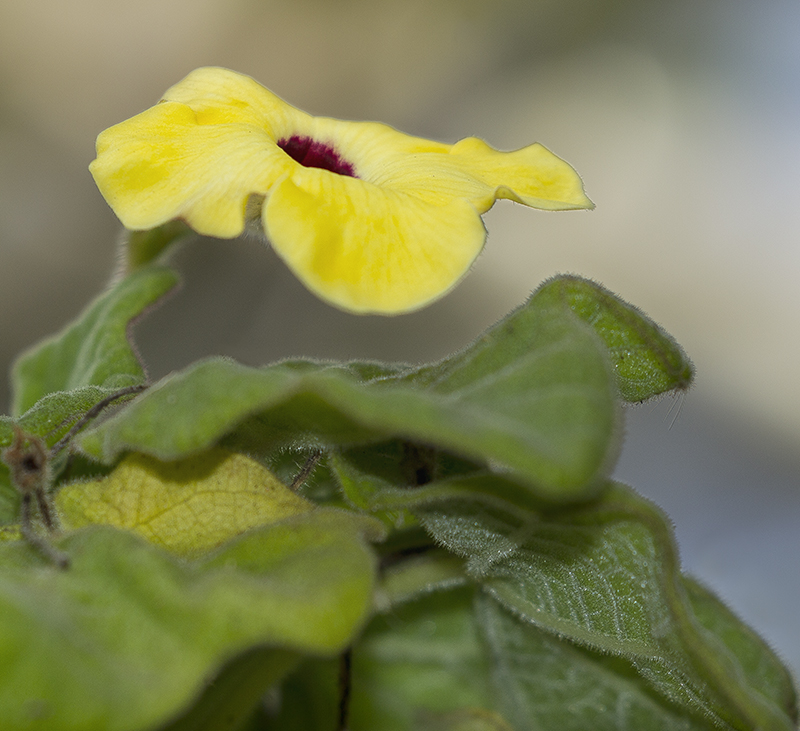
WELCOME MAT
The petals of the blossom make a perfect landing pad for pollinating beetles.
These plants are pollinated by beetles, not bees. Lured by a faint scent (humans can’t sense it), a beetle heads into the flower’s throat, only to be met by a challenge: one lobe of the stigma partially blocks the way. Pushing past, the beetle descends to where lobed anthers await. In many flowers, the powdery pollen of the anthers easily rubs off on the visiting pollinator. But Uncarina anthers hold their pollen within tiny lobes—walled off from all but the just-right pollinator, a beetle.
As the beetle nibbles on the lobe, pollen (described as the consistency of toothpaste) oozes out and coats the insect’s head and body. After feeding, the beetle exits and heads to another flower, where the sticky pollen is rubbed off onto the new blossom’s stigma as it enters. Once pollinated, the flower begins the reproductive process of forming seeds and developing that astonishing protective pod.
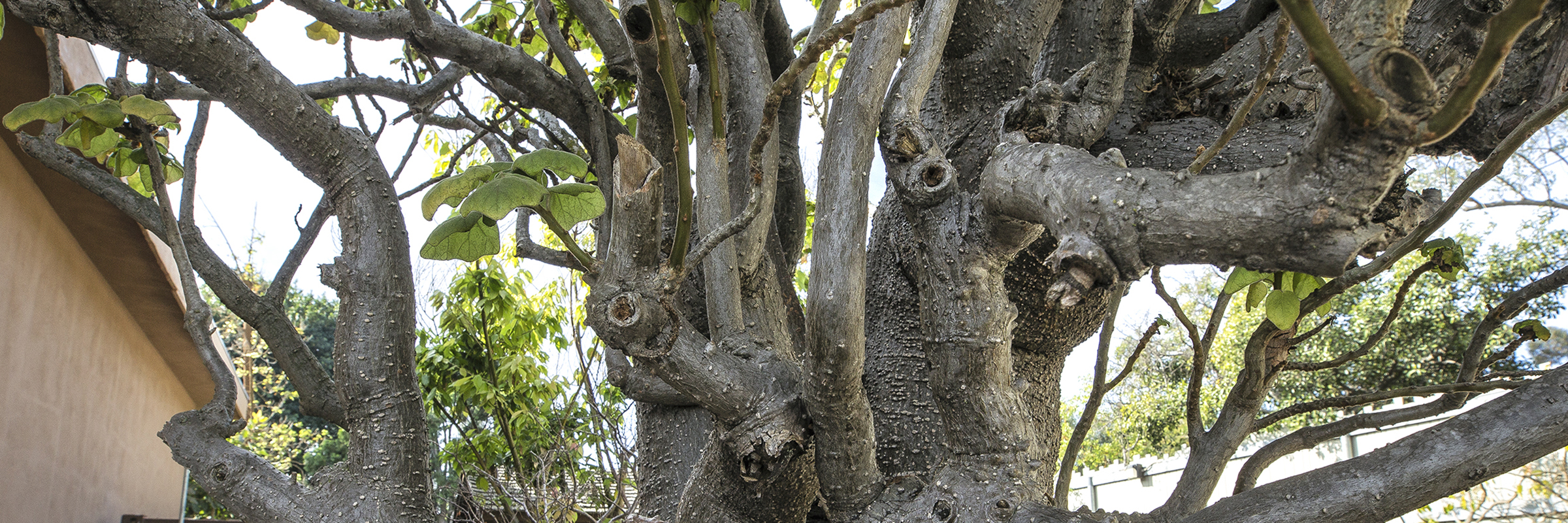
Famously Fat
Native to Madagascar, Uncarina are caudiciforms, also fondly known as “fat plants.” They “bank” moisture in their trunk (called a caudex) and branches. Their swollen stems give them a unique appearance—not to mention a cache of life-sustaining liquid to survive the long dry season. Caudiciforms differ from other types of succulent plants in that their leaves aren’t used for water storage. In fact, these trees are deciduous.
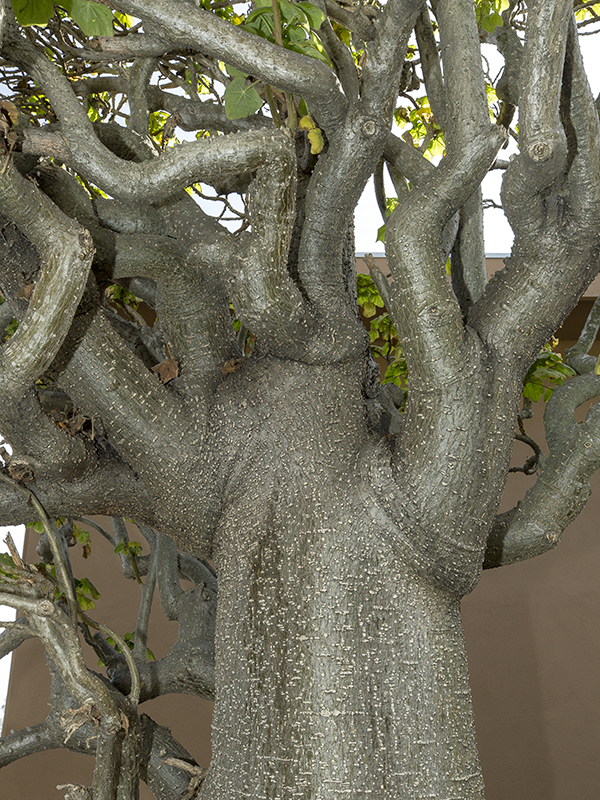
SAVING FOR A NON-RAINY DAY
“Fat plants” like Uncarina cache extra water in their trunks.
Some types of Uncarina have grown in popularity as houseplants and as bonsai plants. Grown in a container, the caudex of U. grandidieri grown can reach 12 inches in diameter over time. Placed unfettered in the ground, the caudex may double or triple that size.
At the San Diego Zoo Safari Park, a young U. grandiddieri greets visitors on the left of the entrance to the the Old World Succulent Garden. At the Zoo, a magnificent U. grandiddieri specimen creates a shady spot for the lizards across from the Galápagos tortoises. Be sure to check them out on your next visit!



